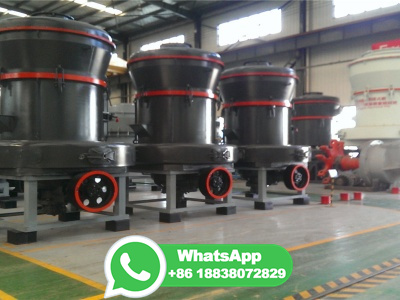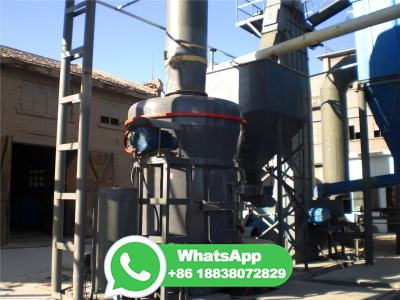
Common materials used to manufacture cement include limestone, shells, and chalk or marl combined with shale, clay, slate, blast furnace slag, silica sand, and iron ore. These ingredients, when heated at high temperatures form a rocklike substance that is ground .
Get Price
· This, of course, would make the object difficult to use, so it makes more sense to prevent rust during storage or shipping. 6. Galvanize. Galvanizing applies a protective coating of zinc over iron or steel. Since zinc corrodes about 30 times slower than iron, .
Get Price
An ironbased powder mixture for powder metallurgy essentially consists of a melted mixture, as a binder, which includes about % to about % by weight of a powder of at least one organic compound selected from stearic acid, oleic acid amide, and stearic acid amide, and about % to about % by weight of a powder of stearic acid bisamide; and the balance which is an .
Get Price
(Method II) or a measuring vessel (Method III). the apparatus into the sample receiving cup until it overMethod I and Method III are favored. flows, using a minimum of 25cm3 of powder with the square cup and 35cm3 of powder with the cylindrical cup. Method I—Measurement in a Graduated Carefully scrape excess powder from the top of the cup by
Get Price
· Method of Making Fine Lithium Iron Phosphate/CarbonBased Powders with an Olivine Type Structure Processes for producing fine /C and nanostructured /C composite powders, where and M is a metal ion. Electrodes made of either nanostructured powders or nanostructured .
Get Price
Metal powders are particles that are typically less than 1,680 micrometres (″) in size, with a highsurface area to mass ratio. There are four main processes used in powder production: atomization, chemical, electrolysis, and. solidstate reduction.
Get Price

Powder manufacturing methods are usually divided into two egories, namely physicalchemical method and mechanical crushing method. Reduction method, atomization method and electrolysis method are widely used in industry. The preparation method and general characteristics of iron powder are also discussed.
Get Price
· Powder Coating. A dry powder is evenly applied to a clean surface. Next, the object is heated, turning the powder into a thin film. There are a wide range of powders available including acrylic, polyester, nylon, vinyl, epoxy and urethane. Powders are commonly applied using an electrostatic spray process.
Get Price
The properties of the granular copper powders produced by the methods described are indied in Table 1. As has been noted, the purity is influenced by the purity of the raw material and the method of preparation. Electrolytic powder is produced from high purity hode copper and the powder is consistently more than 99% pure.
Get Price
· Expert metalworker Doug Bracken of Wiemann Metalworks shares with us the six most common methods for achieving a fine metal patina. The hot iron is wire brushed to free the surface of scale (impurities that form on the surface when the iron is heated) and to prepare the metal for finishing. Experienced architects and designers alike ask me many ...
Get Price
B312 Test Method for Green Strength of Specimens Compacted from Metal Powders. B331 Test Method for Compressibility of Metal Powders in Uniaxial Compaction. B438 Specifiion for BronzeBase Powder Metallurgy (PM) Bearings (OilImpregnated) B439 Specifiion for IronBase Powder Metallurgy (PM) Bearings (OilImpregnated) B528 Test Method for ...
Get Price
Section 5 Methods of sampling and analysis Sampling ... with a band of iron inserted along the edge to hold the pouch open. The pouch is attached to a long pole. Pelicans are ... closed bags of powdered and granular commodities. Doubletube bag triers are constructed of
Get Price
Common materials used to manufacture cement include limestone, shells, and chalk or marl combined with shale, clay, slate, blast furnace slag, silica sand, and iron ore. These ingredients, when heated at high temperatures form a rocklike substance that is ground into the fine powder that we commonly think of as cement.
Get Price
Figure 1 shows water atomized iron and copper powder products. Figure 1: Water Atomized Iron and copper powder products If a falling stream of molten metal is impinged by jets of water, then it is broken up into droplets which rapidly freeze to form granules (>1 mm) or powder ( 1 mm), depending on the composition of the metal alloy, and the water pressure.
Get Price
· The ironrich powder is mixed with clay and made into marblesized pellets, which are then heathardened. That allows for more efficient burning during the next step, smelting. Smelting: The pellets are smelted in a furnace along with coke—coal that has been processed into almost pure carbon—and limestone.
Get Price
A video showing how to make Iron oxide powder or rust powder. Rust is a valuable ingredient in many pyrotechnic recipes, mainly thermite, but it can also be ...
Get Price
10/05/2015 · Rolling: This method is used for making continuous strips and rods having controlled porosity with uniform mechanical properties. In this method, the metal powder is fed between two rolls which compress and interlock the powder particles to form a sheet of sufficient strength as shown. It is then rerolled and heat treated if necessary. The metals that can be .
Get Price
Method: First, a little bit of each type of atom is collected. On the left is a black powder. It is composed of iron atoms. The chemical symbol for iron is Fe . On the right is a yellow powder made up of sulfur atoms. The chemical symbol for sulfur is S . The two types of atoms are stirred together to form a gray / yellowish powder. The powder ...
Get Price
Once broken into smaller pieces, the charcoal and iron ore (sand) are mixed together in a 1:1 ratio. 4. Charge the furnace. Before adding the iron ore and charcoal mixture, the furnace must be charged. Charging a furnace simply means heating it up to temperatures high enough for smelting to occur.
Get Price
· But first, which method would work better...just the vinegar, or the vinegar and bleach. Oh, and by the way, I AM aware that bleach ... easy, and relatively safe way to make iron oxide ("rust"). Make sure you use the right type of bleach. You want to use chlorine bleach ... producing a reddishbrown powder that will settle to the ...
Get Price
EDITOR'S NOTE. This article is the third in a series that has appeared in DFM throughout 2018. In Part 1, we went back to the basics and described what is Hot Briquetted Iron (HBI), what makes it such a useful source of steelmaking metallics, how it became part of MIDREX® Direct Reduction Technology, and where HBI plants are 2 in the series looked at where .
Get Price
area of zero valent iron increases dramatically and hence the surface reactivity of nanoscaled iron particles is enhanced 30 times higher remediation rate than compared to 325 mesh iron powder [5]. Over the last few years, extensive laboratory studies have demonstrated that nanoscaled zero
Get Price
02/05/2021 · In this method, the powder mix is compressed into a soft large flat tablet (about 1 inch in diameter) using a tablet press that is capable of applying high stress. Following this, the slugs are broken by hand or milled using conventional milling equipment to produce granules of the required size. Lubricant is added in the usual manner, and the granules then compressed .
Get Price
A deficiency of iron in the body can leave a person feeling tired and listless, and can lead to a disorder called anemia. Many of the foods we eat contain small quantities of iron. In this analysis the iron present in an iron tablet (dietary supplement) or a sample of food is extracted to form a solution containing Fe3+ (ferric) ions. To make the
Get Price
Iron powder is preferred to iron filings. If fine sulfur powder is mixed with iron filings, it is difficult to obtain a consistent mix, because the two solids can separate. Sulfur, S(s) – see CLEAPSS Hazcard HC096a. Roll sulfur or flowers of sulfur should be finely powdered using a pestle and mortar.
Get Price
· One of the oldest methods to make PM parts is still used today – in fact, it is used to manufacture 1MT/year of ironbased alloy structural components. These components are made by blending a fine iron metal (typically <180 microns) with additives such as carbon, copper, and/or nickel and wax lubricant.
Get Price
22/08/2021 · 4. Make a solution containing iron (II). Whatever your choice of iron (II) salt, you will need to dissolve it in water. Do this as a separate beaker (or other container) from the iron (III) solution to ensure that the iron (III) has not saturated the water. This will allow the most iron (II) to dissolve into the water.
Get Price
Water atomization has been used in the production of iron/steel powders since the 1950s, following its development in the 1930s for copper powders. Median particle sizes of ~50–
Get Price
Metal powders can be produced using several methods, some of which are solidstate reduction, milling, electrolysis, chemical processes, and atomisation. Yet, because it produces the most geometrically convenient powders for 3D , atomisation has been historically regarded as the best method for producing metal powders for AM.
Get Price
· This method will only make slow is my method: Ball mill, soft wood charcoal (willow,balsa,eastern red ceder)are a must. Good potassium nitrate and sulfur. Powders should be ground together with non sparking media for ball mill ie 1/2″ lead balls until powder is like flower.
Get Price
For this reason, powder particle size measurement using screens is limited to a lower range of about 400 opening per linear inch. Very small powder particles tend to agglomerate or stick together, which would make the metal powder screening method ineffective at extremely low ranges anyway.
Get Price

Angle of repose method powder flowing angle: Poured angle of repose: angle less than 30 : good flow angle from 30 to 50 : difficult flow angle more than 30 : almost impossible flow: A potential use for these shortcut methods is to perform comparison between powders. If a hopper is designed for a powder A and has a fairly satisfactory design, then checking Carr Index and .
Get Price
/05/ ©2005 Springer Science+Business Media, Inc. 211 Powder Metallurgy and Metal Ceramics, Vol. 44, Nos. 56, 2005 SELECTION OF ALLOYING METHOD TO PRODUCE IRONBASED POWDER
Get Price